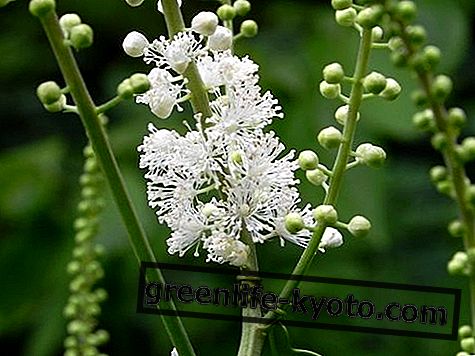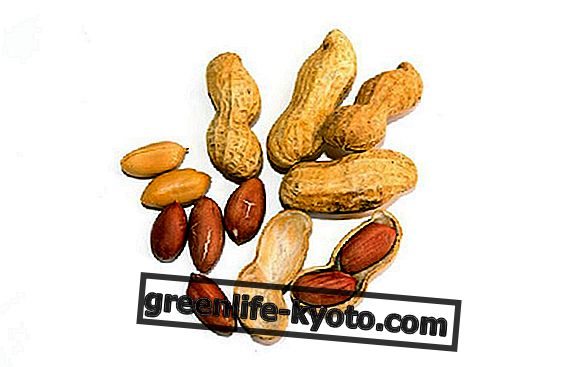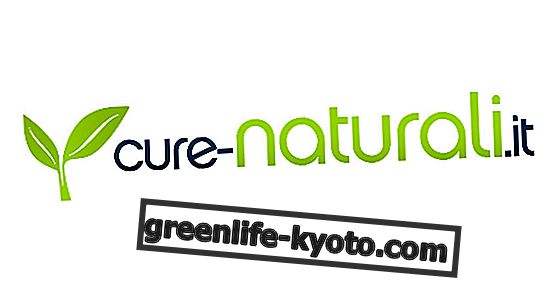
Proteins are substances that form the structure of our body . We could imagine them as the bricks that make up a house that is metaphorically our body .
These proteins are in turn composed of 21 amino acids that form many different proteins with different functions and roles.
There are proteins that will serve for the formation of the tissues of the eyes or of the heart or that will serve for the formation and maintenance of other structures and organs.
Our body needs to take proteins from the outside, through food, in such a way as to compensate for the daily loss of those internal proteins that are used by the body in its metabolic processes.
This protein requirement was estimated with an RDA (recommended daily dose) in 0.8 g / kg / day. The sources of these proteins can derive both from foods of animal origin and of vegetable origin.
We can say that the proteins of animal origin that we find for example in meat, in fish, in eggs and in milk is very similar in structure to those that make up our body and when they are eaten they are usually composed of 21 amino acids.
In plant foods we find the same proteins (vegetables) but usually in the form of directly amino acids and therefore our body will directly assimilate them using them practically without great transformations.
Let's see where to find and how to take vegetable proteins.
1. Powdered vegetable protein
Many vegetables have a high percentage of protein that can be extracted and sold as a powdered product, perhaps dissolved in drinks to drink or mixed with other foods.
They mainly use sportsmen but also those who must have a protein added in their diet and in the specific case of vegetable protein powder people who have made a vegan choice can easily choose them precisely for their extraction from vegetables.
Usually the most used foods to obtain vegetable proteins are legumes and in particular yellow soybeans, but also some cereals and other vegetables.
2. Soy
Soy is certainly the most used legume to extract the protein part both due to its high composition and because it is the vegetable that has been used for the longest time for the processing of products with high plant protein content.
Although its processing is well known, it remains a complex process or one that requires further treatment to eliminate phytates and estrogens from the finished product. Soy protein powders can be purchased as natural supplements and are also used as an ingredient in many vegetable products on vegan lines.
3. Pea
Pea is the legume from which proteins are extracted with the best digestibility among all foods. It was also shown that pea proteins are those that give less problems than allergic reactions and food intolerances even after repeated use of a protein supplement.
We can therefore say that the pea is the best source of protein both for their composition which makes digestion easy and for the lack of allergens. The manufacturing process is complex but not as soy and the biological value of the proteins is still medium. The flavor of these protein powders is pleasant and slightly sweet.
4. Hemp
From hemp are extracted the proteins considered the most complete of those of vegetable origin and are also very bioavailable which means that they are easily assimilable and usable by our body.
A curiosity about hemp is given by its proteic content or which is composed of more than 50% of globular edestine. This substance is very similar to our globulin that circulates in human blood and therefore we can recognize in the hemp a high similarity of composition.
Furthermore, edestine is a promoter of the immune system so that it helps the production of antibodies allowing the body to fight harmful agents.
Another very important factor that puts hemp proteins in the first place in the choice of protein powder is that inside we find all 21 amino acids including the 9 essential amino acids .
It is also a source of essential fatty acids with an optimal proportion of omega 3 and 6.
Its manufacturing process is medium complex and the protein powder that is obtained has a slightly salty taste.
5. Rice
Rice is not usually known for its protein part, which instead is very advantageous especially for those who have problems, intolerances and allergies to milk. In fact, rice proteins are often chosen to replace whey proteins.
These proteins are easily digestible and do not contain cholesterol as are other plant-based proteins.
Often in products based on rice proteins we also find its fibers that help digestion and balance the levels of sugar circulating in the blood.
Finally, rice proteins are assimilated very quickly and are considered lighter than other vegetable proteins such as soy. The manufacturing process is simpler even if its availability is still limited. The flavor of rice protein powder is neutral and therefore very easy to use in various products.
6. Spirulina
Spirulina is another vegetable source from which a very concentrated percentage of protein is obtained. In fact this vegetable or rather this special alga has an incredible presence of proteins up to over 60%.
The other vegetable sources reach 15% of protein part up to a maximum of 35% in soy. In addition, spirulina contains many vitamins such as A, E, K and many of the B group as well as mineral salts, fatty acids, chlorophyll, enzymes and phytoestrogens.
In the products extracted from spirulina we will have to read in the nutritional tables and on the label to check if all the nutrients are present or only the protein part of this alga.
The extraction process is quite complex and it is not easy to find spirulina-based products but its neutral taste and its high biological value will lead spirulina to be increasingly sought after as a natural supplement and vegetable protein.
Contraindication of powdered vegetable proteins
The surely higher risk in the use of vegetable proteins in powder is the excess of daily quantity .
In fact, even the normal modern Western diet sees consumption per person well above the recommended daily dose of protein requirements.
The studies report values of 3 or 4 times greater than this dosage and this can cause several serious health problems.
An excess of protein substances leads to renal overload with many nitrogenous waste substances and also to excessive loss of liquids with consequent general body dehydration.
The body in general shifts its body pH towards acidosis, thus creating the environment suitable for triggering numerous diseases and inflammatory states of various kinds.
According to some studies the connections of the increase of some types of tumor to the assumption of high percentage of proteins have been evidenced
Second risk in the use of vegetable protein powder is not to take all 21 amino acids or rather not to take those particular 9 amino acids that are essential for our body. To overcome this problem it is sufficient to vary the vegetable source of amino acids.
In fact, legumes are deficient in methionine and cysteine but are rich in tryptophan and lysine on the contrary in cereals we have the presence of cysteine and methionine and are instead lacking tryptophan and lysine.
We will simply have to verify that proteins from both legumes and cereals are present in a supplement based on vegetable powder proteins in order to be balanced and have all the essential amino acids.
Warnings in the use of soy proteins
The proteins derived from yellow soy are not well accepted by all people and often those who have a vegan or vegetarian diet exceed the use of soy products. This situation must be kept under control both to avoid a protein excess and because any food taken every day and at high doses can cause problems, maybe even create food intolerances.
Let's think about how many soy-based products and soy proteins are present in the " green " lines sold mainly for people who have made a vegan choice: soy milk, soy cheese, soy yogurt, hamurger and meatballs of soy, cured meats and soy sausages, soy flakes, soybeans in beans, etc ... it is very easy to exceed the use of this food, we are careful to read the labels.













